 W
WThis is a list of named geological features on Saturn's moon Titan. Official names for these features have only been announced very recently, as Titan's surface was virtually unknown before the arrival of the Cassini–Huygens probe. Some features were known by informal nicknames beforehand; these names are noted where appropriate. Note that some features with a physical size given by "diameter" may not be circular and actually refers to its length.
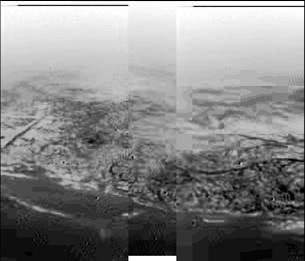 W
WAdiri is a large, bright albedo feature on Saturn's moon Titan. It is named after the paradise in Melanesian mythology. It is located to the west of the large, dark region of Shangri-la.
 W
WArcus (Titan) (pl.arcũs) is an arc-shaped type of landform found on Saturn's moon Titan. Arcus is the Latin word for arc.
 W
WArwen Colles is an area of small hills on Titan, the largest moon of the planet Saturn. The hills are located near Titan's equator at 7.5°S 260°W within the Belet region.
 W
WBilbo Colles is an area of small hills on Titan, the largest moon of the planet Saturn. The hills are located near Titan's equator at 4.23°S 38.56°W on western edge of bright region Quivira.
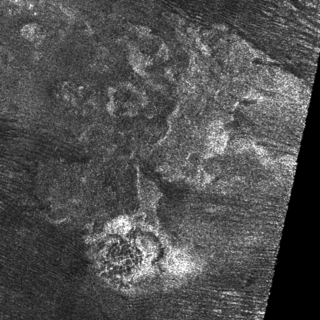 W
WDoom Mons is the name of a mountain range and its eponymous peak on Titan, the largest moon of Saturn. A putative cryovolcano, it is the largest mountain range on Titan by volume, and its 1.45 km-high peak one of the highest. It was discovered by the Cassini–Huygens probe in 2005 and officially named in 2012.
 W
WElivagar Flumina is a network of river channels ranging from 23 km to 210 km in length in the region around the Menrva Crater of Titan. The channel system is at least 120 km wide and shows signs of erosion. At its mouth, an alluvial fan is present. The Elivagar Flumina is interpreted as alluvial due to its closeness to fluvial valleys and as understood from the radar backscatter. Geomorphologic mapping of the Menrva region of Titan has yielded evidence for exogenic processes such as hydrocarbon fluid channelization that are thought to have formed the Flumina network.
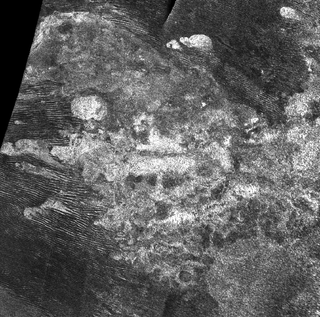 W
WErebor Mons is a mountain on Titan, the largest moon of the planet Saturn. It is located near Titan's equator, between 4-5° south and 35-36° west, centered on 4.97°S 36.23°W, in the western part of Quivira region. It is 40 km across, more than 1 km high and has lobate flow features to its north and east. It is probably a cryovolcano. Erebor Mons is situated about 470 km to the north-northeast of a larger cryovolcanic construct, Doom Mons.
 W
WGanesa Macula is a dark feature on Saturn's moon Titan. It is named after the Hindu god Ganesha.
 W
WGuabonito is a ring of bright features on Saturn's moon Titan. Currently, the feature is thought to be a partially buried impact crater, with the bright features representing the crater's rim.
 W
WMayda Insula is an island in the Kraken Mare, a body of liquid composed primarily of methane, on Saturn's largest moon Titan. Mayda Insula is the first island (insula) to be named on a planet or moon other than Earth.
 W
WMenrva is the largest crater on Titan, with a diameter of 392 kilometers. The crater is a heavily eroded double ringed impact basin, similar to the impact related features of Mars and Mercury. This is evident by Menrva's distinct lack of a central peak, indicating modification of the crater's surface since formation. It has been estimated that Menrva is approximately 2.8 kilometers deep.
 W
WThe Misty Montes are a range of mountains on Titan, the largest moon of the planet Saturn. The range is located in the northern hemisphere of Titan, between 56-7° north and 61-3° west.
 W
WThe Mithrim Montes are a range of mountains on Titan, the largest moon of the planet Saturn. The range is located near Titan's equator, between 1-3° south and 126-8° west and consists of three parallel ridges that are oriented east-west, spaced about 25 km apart. They are located within the region Xanadu. The highest peak is about 3,337 m (10,948 ft) high and is located on the southernmost of the ridges; it is the highest known peak on Titan.
 W
WThe Santorini Facula is a facula on the surface of Titan, around a 40 km wide impact crater. It was named after the Greek island Santorini in 2006.
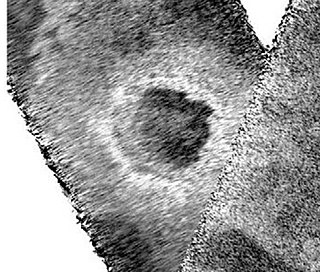 W
WThe Selk crater is a crater on Titan, a moon of Saturn, located at 7°N 199°W. It is a geologically young impact crater that measures approximately 90 kilometres (56 mi) in diameter.
 W
WShangri-La is a large, dark region of Saturn's moon Titan at 10°S 165°W. It is named after Shangri-La, the mythical paradise in Tibet. It is thought to be an immense plain of dark material. It is thought that these regions of Titan were seas, but that they are now dry.
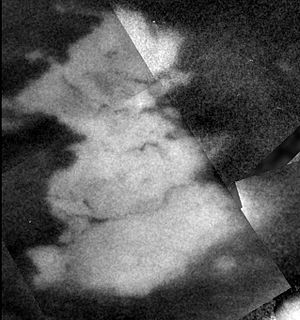 W
WShikoku Facula is a region of bright material on Saturn's moon Titan.
 W
WSotra Patera is a prominent depression on Titan, the largest moon of Saturn. It was formerly known as Sotra Facula; the current name was approved on 19 December 2012. It is a possible cryovolcanic caldera 30 km (19 mi) across and 1.7 km (1.1 mi) deep, and is immediately to the east of the largest putative cryovolcanic mountain on Titan, the 1.45 km (0.90 mi) high Doom Mons. Sotra Patera is the deepest known pit on Titan.
 W
WXanadu is a highly reflective area on the leading hemisphere of Saturn's moon Titan. Its name comes from an alternate transcription of Shangdu, the summer capital of the Yuan dynasty established by Kublai Khan and made famous by Samuel Taylor Coleridge.